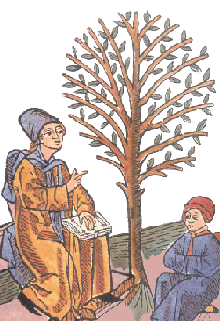
|
Illuminations, Epiphanies, & Reflections
Family
Trees
The
Hanks
Caleb Robert Hank, 1836-1915
Caleb Robert Hank was born in 1836, the fifth son of David and
Elizabeth Parsons Hank. Shortly after his birth, the family
moved
from Virginia to Springfield Township in Gallia County,
Ohio. Caleb, along with his siblings, was educated in the
Gallia
public schools of
Ohio, and by family accounts he was a very good student, who was always
very interested in doing well financially.
After finishing school and reaching maturity, Caleb and his
older brother, Jehu "John" B.
Hank, set out for California in 1859, hoping to become successful
miners. They traveled westward from Ohio to Council Bluffs, Iowa and
began their overland trek to the coast in a covered wagon pulled by an
ox team via the Oregon, Mormon, and California trails. It
took
them 112 days to reach Sacramento, California
Not
surprisingly, the brothers prospected in the northern California
mining country around Shasta, now deserted, but then the most important
rip-roaring mining boomtown with a population of 3,500.
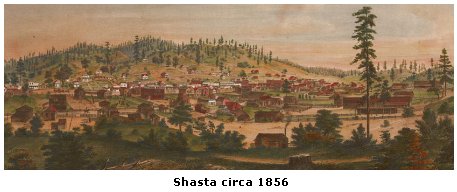
While the brothers never struck it rich in the gold fields, they were
apparently still quite successful and had accumulated a considerable
fortune through a combination of minor mining successes and wise
investments. After ten years both men decided to return east;
John to live in Holden, Missouri with siblings who had moved there from
Ohio, and Caleb to visit relatives in West Virginia and Ohio.
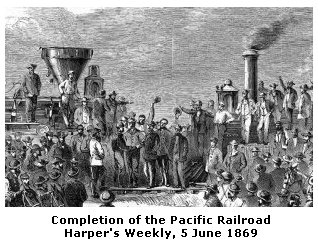 Family
lore has it that Caleb chose to return
by rail from Sacramento,
and purchased a ticket on the first "regular" Central Pacific train to
make the run in May, 1869. This regular passenger train
actually
led the special ceremonial train that carried the Central Pacific's
president, Leland Stanford, to the Golden Spike Ceremony at
the
Promontory Summit in the Utah Territory, and Caleb was present when
spike was driven and the telegrapher flashed out his famous message,
"done," to the rest of the United States on 10 May. Family
lore has it that Caleb chose to return
by rail from Sacramento,
and purchased a ticket on the first "regular" Central Pacific train to
make the run in May, 1869. This regular passenger train
actually
led the special ceremonial train that carried the Central Pacific's
president, Leland Stanford, to the Golden Spike Ceremony at
the
Promontory Summit in the Utah Territory, and Caleb was present when
spike was driven and the telegrapher flashed out his famous message,
"done," to the rest of the United States on 10 May.
After visiting relatives, Caleb decided to spend some time with the
rest of his brothers and sister in Missouri. There he met
America
Brown, and they were married in 1871. It is unclear when they
married or how long they remained in Missouri, but
it was at
least
until the summer of 1872 after the birth of their first daughter,
Jessie. What is known, however, is that their second daughter,"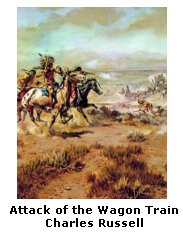 Jennie, was born in 1877 at a ranch about 70 miles south of Silver
City, Idaho, and a third daughter, Olive, was born in Silver
City as well.
Jennie, was born in 1877 at a ranch about 70 miles south of Silver
City, Idaho, and a third daughter, Olive, was born in Silver
City as well.
By the late 1870s, tension had begun to run high between white settlers
and the Bannock Indians. Chief Buffalo Horn--who was angered
by
what he believed was favoritism shown to the Shoshones by the federal
government and who was personally outraged by a local white settler who
allowed his pigs to roam free on the range--began to lead war
parties against wagon trains and stagecoach lines, as well isolated
miners, farmers, and ranchers. The Bannock War lasted until
Buffalo Horn was mortally wounded in a battle near Silver City and the
war
parties were driven into southeastern Oregon were they were decisively
defeated by civilians and soldiers under the command of General O. O.
Howard. During this period, a neighboring rancher was killed
in a
raid, and Caleb, his family, and his ranch hands had several close
calls.
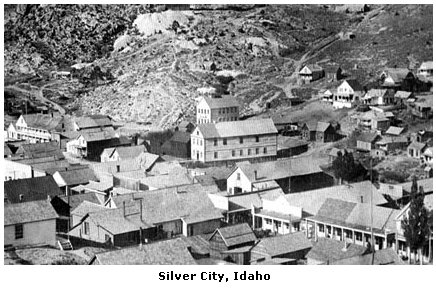
Silver City was to the Idaho silver mines what Shasta was to the
California gold fields, and Caleb did quite well selling cattle from
his ranch to Silver City butchers, eventually earning enough to
establish a partnership with James Scott, a long time rancher of
Scottish descent. Together in 1879, they established the
Scott and Hank Cattle
Company in
Northern Nevada with the intent of selling even more cattle to
the booming
population around Silver City and Boise, Idaho, approximately 250 miles
away. 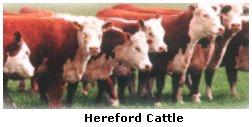 In 1880,
Scott
traveled to Scotland to purchase and import
Hereford cattle
for breeding
stock, returning
with four
bulls and twenty
heifers.
In time, the men
became two of
the most prominent ranchers in
the state. In 1880,
Scott
traveled to Scotland to purchase and import
Hereford cattle
for breeding
stock, returning
with four
bulls and twenty
heifers.
In time, the men
became two of
the most prominent ranchers in
the state.
Their business was also
referred to as the Halleck Cattle Company since the ranch was located
not
to far from old Fort Halleck
in Elko
County. Several roads
connected the area to Silver City and Boise, the Idaho Central Wagon
Road, the Elko and Idaho Toll Road, and the Toano-Boise Road. After the men
purchased the Clover Valley 71 brand, their spread was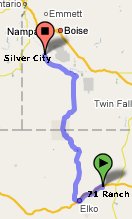 referred to
as
the 71 Ranch, and by the time of the 1880 census,
the
entire Hank
family was living there. Interestingly, Ranch 71 still
exists
today as working
dude ranch. referred to
as
the 71 Ranch, and by the time of the 1880 census,
the
entire Hank
family was living there. Interestingly, Ranch 71 still
exists
today as working
dude ranch.
Some time in
the late
1880s, Caleb and James Scott parted ways with the Hanks moving to
Ogden, Utah where they lived for over ten years. While in
Ogden, a
fourth daughter was born in 1887, Edith Elizabeth
Hank. During this
time,
Caleb obtained some
property--where
he moved his cattle stock--in central Wyoming that he named
Copper Mountain, southeast of
what is now Thermopolis. He frequently
visited the area and built a small cabin there
near the
confluence of Ditch and Buffalo Creeks. After seeing a
number of families
begin to
settle in the area, Caleb decided to move the entire family to
Thermopolis and use his property to raise horses.
The Hanks left Ogden on the Fourth of
July, 1898
and spent thirty days on the 385 mile trip, traveling in a pair of
wagons and making plenty of stops along the way to enjoy the
country. They arrived at the one-year-old town of Thermopolis
in
August. built a small cabin there
near the
confluence of Ditch and Buffalo Creeks. After seeing a
number of families
begin to
settle in the area, Caleb decided to move the entire family to
Thermopolis and use his property to raise horses.
The Hanks left Ogden on the Fourth of
July, 1898
and spent thirty days on the 385 mile trip, traveling in a pair of
wagons and making plenty of stops along the way to enjoy the
country. They arrived at the one-year-old town of Thermopolis
in
August.
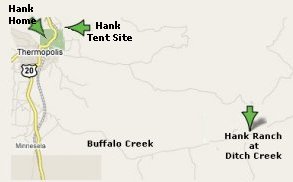 By that time
the
population had grown to around 150
people, and
there wasn't a house to be bought or rented. So, the family
initially lived in a tent on the east side of the Big Horn
River.
Eventually, they moved into what Edith Hank later described as "one of
the best, if not the best house in town." At their
ranch, the
Hanks raised
mostly Morgan horses, but also some draught horses bred from
stock that Caleb imported from Scotland with the assistance of his old
partner James Scott. By that time
the
population had grown to around 150
people, and
there wasn't a house to be bought or rented. So, the family
initially lived in a tent on the east side of the Big Horn
River.
Eventually, they moved into what Edith Hank later described as "one of
the best, if not the best house in town." At their
ranch, the
Hanks raised
mostly Morgan horses, but also some draught horses bred from
stock that Caleb imported from Scotland with the assistance of his old
partner James Scott.
|
|

